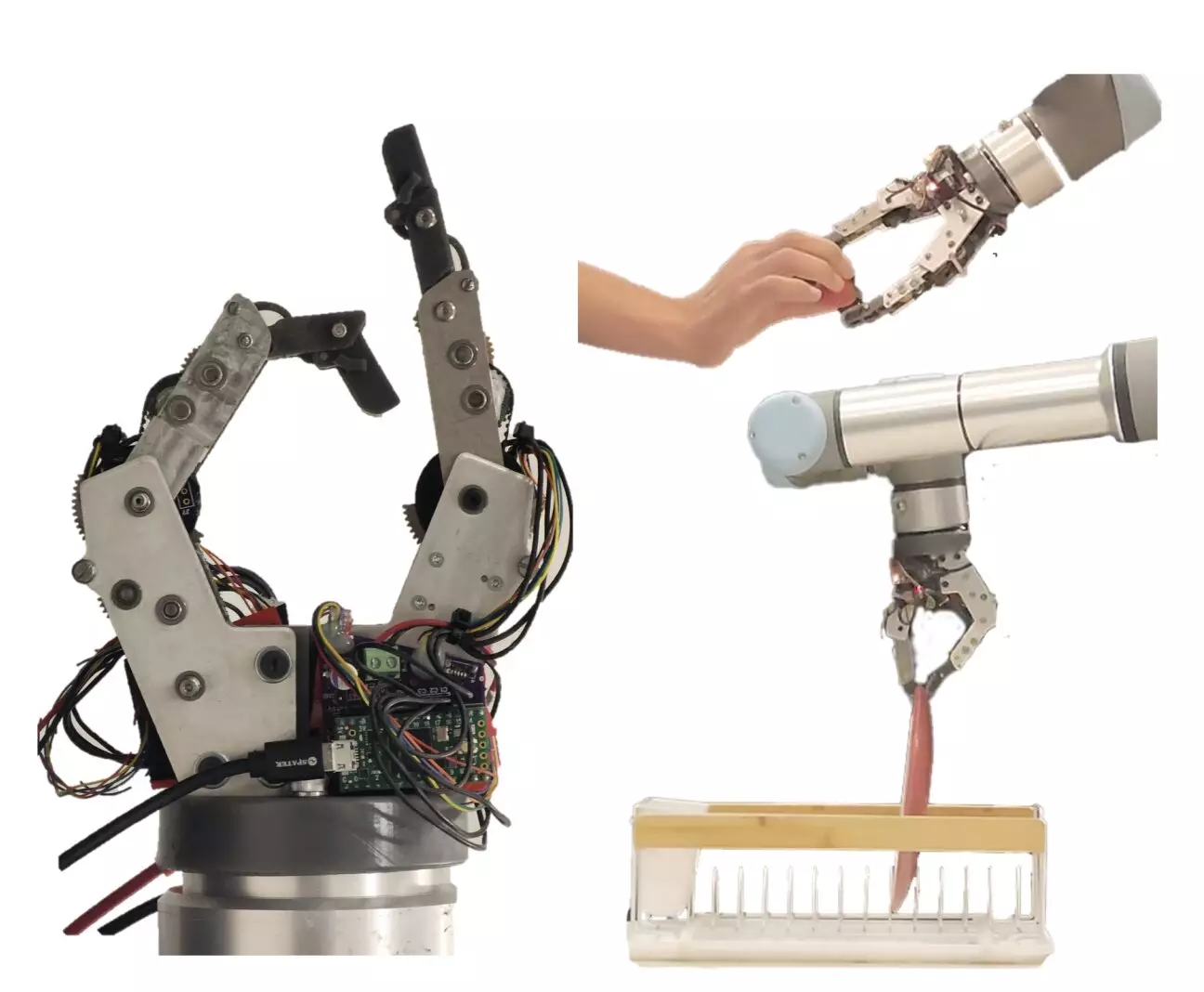Robots are becoming an integral part of our daily lives, assisting humans with various tasks in different settings. However, for robots to be truly helpful, they need to be able to manipulate objects effectively and efficiently. The development of cost-effective robotic grippers or artificial hands is crucial in enabling robots to perform dexterous object manipulation tasks in real-world scenarios.
Researchers at Improbable AI Lab and MIT have recently introduced a new two-finger robotic gripper designed to tackle everyday manipulation tasks with increased effectiveness. This robotic system, outlined in a paper on the arXiv preprint server and to be featured in the IEEE ICRA 2024 proceedings, is capable of picking up objects of various shapes and textures and placing them in specific locations. The design is centered around a compact finger that meets the mechanical and dynamical requirements for performing 30 diverse everyday tasks.
The two-finger robotic gripper features human-like fingers that can bend and tightly grasp objects, mimicking the functionality of human hands. The researchers conducted real-world experiments to evaluate the speed, compliance, and force exerted by the gripper while completing basic pick-and-place tasks. Despite having only 2 degrees of freedom, the gripper demonstrated impressive performance in tasks such as picking and placing dishes, handling thin and delicate objects, and more.
Potential for Future Development
While the current gripper design is limited to two fingers, the researchers aim to expand the capabilities of the system by incorporating additional fingers in future iterations. By enhancing the design and functionality of the gripper, they hope to improve its performance across a wider range of daily tasks. The ultimate goal is to create advanced robotic systems that can seamlessly integrate into household environments and assist with various activities that humans engage in on a regular basis.
The development of two-finger robotic grippers represents a significant advancement in the field of robotics, particularly in the area of everyday object manipulation. The innovative design and promising performance of these grippers pave the way for the creation of more sophisticated robotic systems that can provide valuable assistance to humans in a variety of settings. As researchers continue to refine the design and functionality of these grippers, the potential for integrating robots into our daily lives becomes increasingly promising.


Leave a Reply